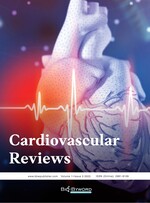Abstract
Objective: To explore the treatment methods and value of the no-reflow phenomenon during percutaneous coronary intervention (PCI). Methods: 180 patients with acute myocardial infarction (AMI) who underwent PCI treatment at the First Hospital of Hebei Medical University from November 2020 to December 2022 were selected and divided into Group A, Group B, and Group C by random number table extraction method, each group included 60 cases. Group A received intracoronary injection of recombinant human urokinase and Group B received intracoronary injection of diltiazem. Group C adopted a targeted drug administration strategy of “front and back pinch method,” where targeted thrombolysis was performed in the target vessel before the stent was released to quickly dissolve the residual thrombus near the lesion and the small distal thrombus; recombinant human urokinase was subsequently injected in the targeted vessel. The incidence of cardiovascular events, cardiac function, and quality of life of the three groups were analyzed. Results: After the intervention, the incidence rates of angina pectoris, heart failure, and recurrent myocardial infarction in Group C were lower than those in Group B (P < 0.05); the overall incidence rate was the lowest in Group C, followed by Group A and Group B; after intervention, left ventricular end-diastolic diameter, end-systolic diameter, and ejection fraction in Groups A and C were all better than those of group B (P < 0.05), and Group C was better than Group A; after intervention, the scores of different dimensions of quality of life in Groups A and C were higher than those of Group B (P < 0.05). Conclusion: AMI patients are prone to the no-reflow phenomenon after PCI treatment. Using recombinant human urokinase to complete the “front and back pinch method” can effectively improve the no-reflow phenomenon, reduce the incidence of cardiovascular events, optimize cardiac function, and improve the patient’s quality of life and survival rate.
References
Gan L, Chen B, 2021, Analysis of the Predictive Value of Serum Lp-PLA2 Levels in the Occurrence of No-Reflow During Emergency PCI in Patients with Acute ST-Segment Elevation Myocardial Infarction. Medical Theory and Practice, 34(14): 2493–2494.
Shangguan Z, Liu X, 2023, The Mechanism, Prediction Method, and Prevention and Treatment of No-Reflow Phenomenon in Patients with ST-Segment Elevation Myocardial Infarction After PCI. Journal of Practical CardioCerebraland Pulmonary Vascular Diseases, 31(10): 21–25.
Yang Q, Wang Y, Bai N, 2023, Risk Factors for Coronary No-Reflow After PCI in Acute Myocardial Infarction and its Effect on Serum ITLN-1 and sICAM-1 Level. Chinese Journal of Evidence-Based Cardiovascular Medicine, 15(6): 734–736.
Ma W, Wang C, Jin H (review), et al., 2023, Progress in the Treatment of No-Reflow Phenomenon During PPCI Surgery for Acute ST-Segment Elevation Myocardial Infarction. Journal of Difficult Diseases, 22(2): 220–224.
Fan L, Zhang Y, 2022, The Predictive Value of Platelet/Lymphocyte Ratio Combined with Average Platelet Volume Detection for No-Reflow Patients with ST-Segment Elevation Myocardial Infarction After Percutaneous Coronary Intervention. China Medical Herald, 19(26): 67–70.
Khan KA, Qamar N, Saghir T, et al., 2022, Comparison of Intra-Coronary Epinephrine and Adenosine for No-Reflow in Normotensive Patients with Acute Coronary Syndrome (COAR Trial). Circulation Cardiovascular Interventions, 15(2): 163–171. https://doi.org/10.1161/CIRCINTERVENTIONS.121.011408
Ma J, Yan N, Ma X, et al., 2022, Predictive Value of Homocysteine Combined with CRP/Alb Ratio on the No-Reflow Phenomenon After Emergency PCI in ST-Segment Elevation Myocardial Infarction Patients with Metabolic Syndrome. Journal of Clinical Cardiology, 38(4): 308–314. https://doi.org/10.13201/j.issn.1001-1439.2022.04.011
Wang G, 2022, Study on the Effect of Ticagrelor on Coronary Blood Flow and Adverse Cardiovascular Events in Patients with STEMI Treated by PCI. Chinese Modern Drug Application, 16(9): 101–103.
Zhao J, Zhang B, 2023, Clinical Efficacy of Levosimendan in the Treatment of Vascular Non-Reflow Complicated by Heart Failure After PCI in Acute Coronary Syndrome and its Impact on Cardiac Function. Journal of Rational Clinical Drug Use, 16(9): 1–4.
Liang X, Yang L, Zhao X, et al., 2022, Clinical Analysis of No-Reflow After PCI in Elderly Patients with STSegmentElevation Acute Myocardial Infarction. Chinese Journal of Molecular Cardiology, 22(3): 4644–4648.
Shi X, Niu F, 2022, The Application Value of High-Dose Atorvastatin Calcium in Patients with Acute ST-Segment Elevation Myocardial Infarction Undergoing Percutaneous Coronary Intervention. Henan Medical Research, 31(9): 1694–1697.
Kaur G, Baghdasaryan P, Natarajan B, et al., 2022, Pathophysiology, Diagnosis, and Management of Coronary No-Reflow Phenomenon. The International Journal of Angiology, 31(2): 107–112. https://doi.org/10.1055/s-0041-1725979
Chen W, Zhang M, 2021, Effects of Huayu Qutan Granules on Cardiac Function and Cardiovascular Events in Patients with No-Reflow After PCI for Acute Myocardial Infarction. Liaoning Journal of Traditional Chinese Medicine, 48(8): 106–109.
Pan Y, Chen R, Zhang Y, et al., 2021, Research Progress on the No-Reflow Phenomenon in Patients with Acute ST-Segment Elevation Myocardial Infarction After PCI. Central South Journal of Medical Sciences, 49(3): 358–362.
Sadeghian M, Mousavi SH, Aamaraee Z, et al., 2022, Administration of Intracoronary Adenosine Before Stenting for the Prevention of No Reflow Inpatients with ST-Elevation Myocardial Infarction. Scandinavian Cardiovascular Journal, 56(1): 23–27. https://doi.org/10.1080/14017431.2022.2035807
